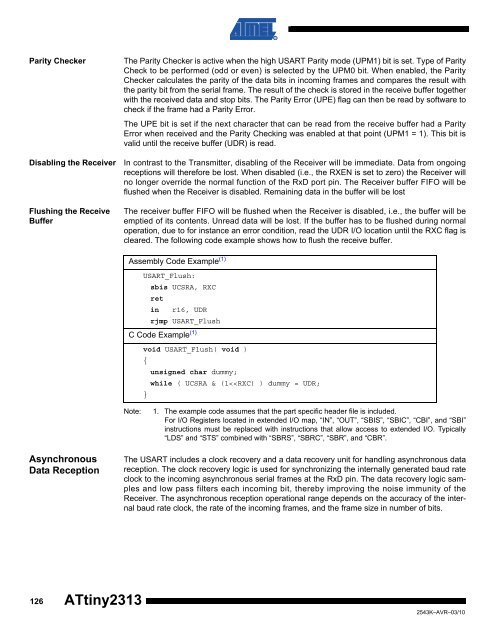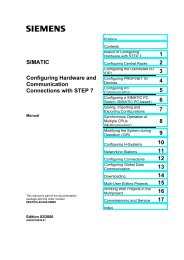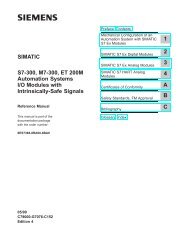ATtiny2313 Datasheet - DCE FEL ČVUT v Praze
ATtiny2313 Datasheet - DCE FEL ČVUT v Praze
ATtiny2313 Datasheet - DCE FEL ČVUT v Praze
Create successful ePaper yourself
Turn your PDF publications into a flip-book with our unique Google optimized e-Paper software.
Parity Checker The Parity Checker is active when the high USART Parity mode (UPM1) bit is set. Type of Parity<br />
Check to be performed (odd or even) is selected by the UPM0 bit. When enabled, the Parity<br />
Checker calculates the parity of the data bits in incoming frames and compares the result with<br />
the parity bit from the serial frame. The result of the check is stored in the receive buffer together<br />
with the received data and stop bits. The Parity Error (UPE) flag can then be read by software to<br />
check if the frame had a Parity Error.<br />
The UPE bit is set if the next character that can be read from the receive buffer had a Parity<br />
Error when received and the Parity Checking was enabled at that point (UPM1 = 1). This bit is<br />
valid until the receive buffer (UDR) is read.<br />
Disabling the Receiver In contrast to the Transmitter, disabling of the Receiver will be immediate. Data from ongoing<br />
receptions will therefore be lost. When disabled (i.e., the RXEN is set to zero) the Receiver will<br />
no longer override the normal function of the RxD port pin. The Receiver buffer FIFO will be<br />
flushed when the Receiver is disabled. Remaining data in the buffer will be lost<br />
Flushing the Receive<br />
Buffer<br />
Asynchronous<br />
Data Reception<br />
126<br />
<strong>ATtiny2313</strong><br />
The receiver buffer FIFO will be flushed when the Receiver is disabled, i.e., the buffer will be<br />
emptied of its contents. Unread data will be lost. If the buffer has to be flushed during normal<br />
operation, due to for instance an error condition, read the UDR I/O location until the RXC flag is<br />
cleared. The following code example shows how to flush the receive buffer.<br />
Assembly Code Example (1)<br />
USART_Flush:<br />
sbis UCSRA, RXC<br />
ret<br />
in r16, UDR<br />
rjmp USART_Flush<br />
C Code Example (1)<br />
void USART_Flush( void )<br />
{<br />
unsigned char dummy;<br />
while ( UCSRA & (1

















